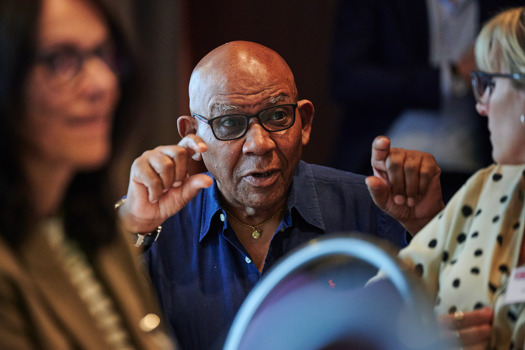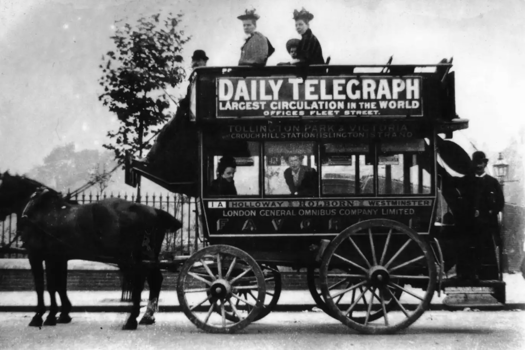While that is undoubtedly a good thing, the boom in hiring is leading to talent shortages. As Tom Hadley, director of policy at the Recruitment and Employment Confederation pointed out shortly before Christmas, “the challenge of ensuring that the demand for staff is met by the supply of suitably skilled candidates casts a shadow”.
As recruiting high-calibre people becomes harder, employers in the print sector must up their game. This encompasses both sharpening up hiring processes and making sure your company is seen as an attractive proposition for jobseekers.
Persuading the cream of the crop to come on board [see boxout] requires considerable effort. But for a whole host of reasons, it’s important to get it right whatever the nature and level of the position. Bad hires can negatively affect team morale and company performance.
So, how can you make sure you get it right? George Thompson, joint managing director at recruitment agency Harrison Scott Associates recommends always cross checking on social media. “If they have a LinkedIn profile, we check that the dates on their profile match that on their CV. If they don’t... warning bells.”
Thompson adds that his business has a database built up over 28 years, “so there is seldom a CV that we see where we don’t know someone who will know that candidate from a past employer. Obviously employers don’t have such access to info on the scale we have, however always look at an applicant’s past history and see if any of your existing staff knows anyone who has worked with the applicant in the past. A CV is information the applicant wants you to see, you want to gather information independently.”
ProCo managing director Jon Bailey says that he is not personally a fan of CVs, often finding them to be woolly and lacking in personality. “I actually prefer it if someone sends me a video showing me who they really are or an example of something they have done in their life, either professionally or personally. Anything to give cut-through.”
Bailey does, however, request information from candidates on the actual deliverables they have achieved and prefers to discuss these in detail during a preliminary telephone interview. Applicants will only be seen in person if they can clearly demonstrate how they have achieved these deliverables.
Prompt response
Shanaz Syeda, HR manager at Inc Direct takes the view that it is vital to provide candidates with feedback promptly. Inc Direct aims to get in contact with job applicants within 24 hours to thank them for their interest. Within 48 hours of making an application a candidate will receive some form of feedback, and if shortlisted interviews will be arranged. Syeda makes the point that smooth and swift communication should be key “as there is nothing worse than to shortlist a candidate and then find out they have been snapped up by a competitor. It’s a very fast-moving market and good candidates are hard to find so it’s critical to keep the momentum going once a suitable candidate is sourced.”
When it’s time for face-to-face interviews, some employers risk alienating good candidates by taking a misguided approach. “You’ve identified a promising candidate and invited them for interview,” says Dani Novick, director at Mercury Search & Selection. “So make sure you don’t keep them waiting: give them a good greeting like you are pleased to see them, thank them for coming, be attentive during the interview, show them courtesy.
“I am not saying you are not going to be thorough in questioning and assessing them, but you do need to show some respect. We have heard candidates come out of an interview saying the employer behaviour was pretty awful, aggressive, arrogant or just plain awkward; trying to trip them up and belittle them at every step. Clearly these candidates weren’t queuing up to work for that interviewer. Thankfully the fads for oddballs questions like ‘How many golf balls could you fit into a bus?’ are dying out.”
Syeda says the aim at Inc Direct is to conduct two interviews. The initial one with the line manager, talking about the role, skills, experiences and suitability for the position. Then the second interview is conducted by one of the directors and places greater emphasis on the organisation, its values, culture and vision. “This allows us to ensure we are making the perfect selection. It also gives the candidate an insight to what Inc Direct is all about and helps them make that very important decision.”
But even if the interview experience is a good one, candidates will be put off if they don’t receive feedback promptly or if the process drags on for months. If they are already in a good job they’ll lose interest and there’s the danger that if they are actively looking for a new role, someone else with a sharper process will snap them up. However, if you have a slick recruitment process and treat candidates well, selling the advantages and benefits of working for you, even those you turn down may become advocates for you as an employer, boosting your corporate reputation in the industry.
It’s good practice to keep records of unsuccessful candidates. It may turn out that their skills are relevant for a different opportunity further down the line.
“It is certainly acceptable to inform unsuccessful candidates by email,” says Thompson. “However, if it is someone who has taken the time to come and meet you, much better if this be done by phone. If it goes through to voicemail it is a good idea to say ‘really sorry, we are offering the position to another candidate, please call me and I will go over why we made the decision’. If you just leave a message to say ‘can you give me a call’ and it’s say a Friday, and the person calls back, but can’t get you, that’s the whole weekend they are left wondering if it is good news or bad news.”
Money matters
Of course, before your preferred candidate can come on board, the thorny issue of remuneration has to be resolved. The logical starting point is their current salary, with most candidates understandably looking to secure an increase. “Negotiating the package for me starts on day one,” says ProCo’s Bailey. “Of course the package is important but it’s not just about the money. We expect the candidate to want to work at ProCo and by the time we get to offer the role, they should be excited about the opportunities and have a strong desire to deliver for the business. They will have seen how we work and understand the level we expect. Likewise, the company should be feeling very positive and confident that they have got the right person. In that instant, negotiating a package that everyone is happy with is much easier.”
Bailey says he has learned that it is essential to “de-risk” the recruitment process by spending time on it upfront, and just as importantly in the probation period. “For years, I’d say ‘I’m too busy to carry out comprehensive interviews and get detailed references, so let’s give them a go’, yet always found the time if I needed to see a prospective customer that may have a £100,000 job to place. That’s madness when you think the new sales recruit should be delivering that kind of value to the business every month! The same thing goes for the bedding in process.”
During the probationary bedding in period it is important to set clear expectations on numbers and behaviours that are in the new recruit’s control. There should also be regular updates, support and mentoring to give newcomers the best chance of success.
Attracting the best
“When trying to attract talent, you need to make a case for them to join you,” says Dani Novick, director at Mercury Search & Selection. “Fundamentally, if they have a choice between you and another employer, why would they choose you? And before you get your chequebook out, remember the attraction of financial rewards soon fades. Think about what’s in it for them as employees, what they get in terms of the work they do, the opportunities for learning and progress and the chance to do great work.”
One company that in recent years has forged a reputation for itself as a canny recruiter of talent is Pureprint. Its chief executive, Mark Handford, is responsible for all the key recruiting and is considered a very good reader of people, with a keen eye for who would fit comfortably with the culture and aspirations of the business.
“As anyone in the industry knows, the last six or seven years have seen some of the toughest market conditions as we all wrestle with changing trading patterns and volumes due to digital media alternatives and tougher economic conditions,” says Pureprint direcrtor Richard Owers. “Good people working for good companies usually stay put, but the market conditions have meant that there are some very good people who have found themselves looking for a more positive environment.”
Owers adds that by remaining positive, continuing to invest and pursuing a strategy of growth and diversification, Pureprint has shown itself to be a “good match for… the ambitions of some very good people”.
RECRUITMENT BEST PRACTICE
Setting the ground rules
Make sure you are absolutely clear on why you are recruiting. This is all the more important in the case of a newly created role.
Weigh up whether the role requires a full-time member of staff. Might a part-timer or job share scenario work just as well, or perhaps even better?
Write a job description that covers the key requirements of the role.
Draw up a ‘person specification’. This should centre on the competencies and characteristics you would ideally like the successful candidate to possess.
Be mindful of equal opportunities legislation from the outset. You must not discriminate on grounds such as age, sex, disability, race, religion, sexual orientation and so on. A handy guide to how the Equality Act 2010 applies to recruitment and promotion can be found here: bit.ly/equality_act_PDF.
Advertising and shortlisting
Give careful consideration to how you will reach your target group – obviously recruitment advertising in PrintWeek should always be top of mind!
Networking site LinkedIn is also a good avenue for identifying people with the right blend of skills and experience for your needs.
Be sure not to overlook internal candidates. You may already have a great person for the job working within your company and, of course, promotion/career development is very good for morale.
Decide how many candidates you intend to invite for a first interview before you begin sifting through CVs – and stick to it. A first stage shortlist can be between four and eight candidates, with the final stage limited to just three or four.
Check for any inconsistencies in the applicants’ details. Does the information on a candidate’s CV match their LinkedIn profile? Are there any significant unexplained gaps in their employment? If they have applied previously, take the time to make sure there are no glaring discrepancies between the old CV you have on file and the new one.
Can they quantify their performance and show a positive impact in a current or previous role? For example, by supplying measurable KPIs that demonstrate what they have achieved personally. Have they boosted turnover, improved manufacturing efficiency or cut waste? How and by how much?
Take a look at their social media presence. Are they doing anything to cause concern?
The interview process
Prepare and structure your list of questions ahead of the actual interview. And check that you have asked all of the key questions you intended before finishing the interview.
Panel interviews with two or three interviewers are generally considered to be more effective and objective than one-on-ones. Ideally, the line manager for the position should feature on the panel.
Ask open-ended questions. Not those eliciting a yes or no response. For instance: ‘How did you deliver...?’
Be punctual and polite and give the interview your full attention. Try to avoid interruptions.
Aim to ask the same questions of all candidates. By so doing, it should be easier to make a judgment call on who is the best candidate.
Keep all notes you make during an interview, these will be useful when explaining to unsuccessful candidates why they were not chosen.
As well as finding out about the candidate, use the interview process as an opportunity to ‘sell’ your company, setting out its culture, commercial achievements and opportunities for career/skills development.
Coming to a decision
Always take up references.
Don’t procrastinate. Leaving candidates hanging is bad form and gives a negative impression of your business.
Always communicate promptly with unsuccessful candidates, explaining why they were unsuccessful.
Keep the details of unsuccessful applicants on file. They may be suitable for a different role in future.
Offer letters to successful candidates should be warm, upbeat and positive as well as containing all the necessary information. Employers sometimes make the mistake of being too functional and formal when communicating offers. If a candidate is weighing up several offers, or is unsure whether to leave their current employer, a warm and welcoming tone may make all the difference.
Send a digital soft copy of the offer letter to the successful candidate via email as well as putting the hard copy in the post. This sends a signal that you are efficient and professional – and are keen to have them on board.
Bedding in & assessing success
Make sure you have a thorough induction process in place. New starters should be given orientation as to the facilities on site and a clear explanation of how/where their job fits into your organisation. They should also be given a clear outline of their role and responsibilities, which should closely match the original job description.
Be clear on what you expect and the metrics by which performance will be assessed during the probationary period.
Discuss progress against objectives regularly and look carefully at what training is necessary.
Provide support - and mentoring if possible.
Weigh up the effectiveness of your recruitment activity. Did you lose any candidates to the competition because you moved too slowly? Was your job description good enough to screen out unsuitable candidates? Do you have a respected employer brand and do you offer the sort of career progression opportunities that will appeal to the best candidates?










